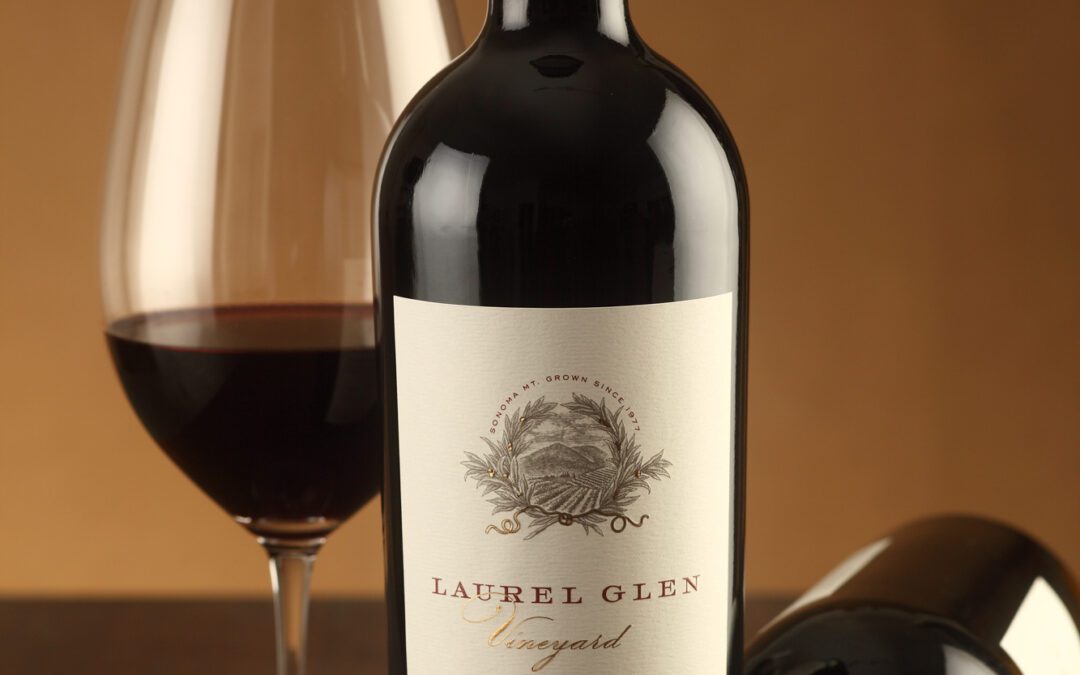Since my team and I took over the stewardship of Laurel Glen Vineyard in March 2011, we have released 11 vintages of Laurel Glen Vineyard Estate Cabernet Sauvignon. March 2024 will be the 12th release under the winemaking direction of Randall Watkins. It is time to start evaluating how the wines of the Bettina era are developing!
Recently, Randall took on the heroic task of tasting and evaluating every Laurel Glen Vineyard Estate Cabernet Sauvignon vintage he had ever had a hand in making. What a hero! Before we get into his insights, I want to take a minute to parse the meaning of the words, ‘a hand in making.’
When the ink dried on the sales contracts and the keys changed hands on March 4, 2011, I assumed ownership of the 2009 vintage, in barrel, and the 2010 vintage, only recently moved to barrel and still largely going through Malolactic Fermentation. So, to be clear, the first two vintages of Laurel Glen Vineyard Estate Cabernet Sauvignon the winery released under my stewardship, were, to a significant extent, Patrick Campbell’s wines. Randall and our consultant at the time, David Ramey, were certainly very picky about which lots they used and how they finished the wines. 2011, however, is my and Randall’s first vintage from budbreak to bottling.
What distinguishes 2011 from 2010 more than anything else, weather and winemaker aside, is the changes our viticulturist Phil Coturri made to pruning, trellising and farming practices in the vineyard. The vines were pruned to carry a lighter fruit load (fewer clusters per vine,) and the trellising was adjusted to allow better light and air to reach every single cluster and, of course, we began farming organically – a long-term project to improve the health of the plant and the soil.
How do the changes in farming affect what you taste in the bottle? Well, in several ways. When the vine is trying to ripen less fruit, each berry gains in concentration and intensity. When each cluster gets the same amount of light and air, ripening proceeds more evenly. And when we go to pick that fruit, it will be uniformly ripe. But to cut to the chase, the most significant difference between 2011 and 2010 Estate Cabernet Sauvignon is probably the mid-palate – i.e. what you taste in the middle of your mouth. The wines pre-2011 have a lean quality that can be a little austere when young. It took 8-10 years for the 2010 and earlier vintages to flesh out and deliver a rich and seamless drinking experience.
The 2011 and every vintage of Laurel Glen Vineyard Estate Cabernet Sauvignon since has a beautiful, immediate richness that softens the impression of the tannins and acidity and allows you to enjoy the wine even when young. Now, after more than a decade in the bottle, the differences between the 2010 and the vintages that came after are more subtle.
So, back to Randall’s heroic task. Following are Randall’s 2023 tasting notes for 2010 through 2019 Laurel Glen Vineyard Estate Cabernet Sauvignon. His rating system is nice and simple: Good, Very good, Better, Best.
2010 LGV: Dried raspberry/fruit rollup, notes of vanilla, cinnamon, clove, and sage. Lots of fruit, seems like a wine that is much younger, but a little port-like. Hint of smoke, cherry preserves, black forest cake, nice medium bodied tannin. Drink now – 2030: Very good
2011 LGV: perfumed, pretty, minty, roasted coffee. More savory with bay and herb. Delicious boysenberry and fresh acidity. Lighter bodied than most Laurel Glen wines. Drink now – 2026: Very good
2012 LGV: Ripe fruit, maraschino cherry and raspberry jam, leaf tobacco, umami! Rich generous mouth with roasted coffee, charred barrels, and sweet complexed tannin. Has aged well, but not overly tannic. Drink now – 2032: Better
2013 LGV: Smells like brick, quite earthy, savory roasted herbs, fresh cherries, charred oak and crushed rock. Good acid, very youthful mouth, excellent long tannin texture, soy. Drink now – 2035: Better
2014 LGV: Spice and forest floor aromas, anise, thyme, pine needles, dried cherries, cigar box. Very fresh in the mouth, tastes 5 years younger, elegant tannin, impressive. Drink now – 2036: Best
2015 LGV: A little reduced, so give it a moment to open. Wild fermentation aromas, dark and deep aromas, bittersweet chocolate, black licorice, blackberry jam, olive tapenade, peppercorn and sage. Boysenberry flavors, balanced acidity, cocoa powder, dusty tannins, you can taste the terroir. Drink now – 2038: Better
2016 LGV: Very aromatic! Ripe bing cherry, caramel, tobacco leaf, cracked black pepper. Raspberry jam, strawberry-rhubarb, juicy, tangy, nice minerality and toasted French oak. Medium bodied structure. Drink now – 2036: Better
2017 LGV: Deep dark cherry, toasted coconut, high tone lifted aromas. Cherry compote, baking spices, caramelized, very deep and complex. Powerful yet elegant. Drink now – 2037: Better
2018 LGV: Black cherry and wild mountain blueberry. Hints of lavender and vanilla. Lots of fruit, keeps evolving in the glass! Leather, spice, espresso. Very full mouth with plenty of energy and grip. Should age very well. Drink now – 2043: Best
2019 LGV: Very fresh and delicious, raspberry yogurt, strawberry-rhubarb, crème brûlé. Sweet ripe fruit in the mouth, again more red fruit than black, ripe but in the raspberry and strawberry realm. Great acidity and energy! Drink now – 2039: Better
Because we ourselves love how these wines develop over time, we always have one or two library vintages open in our Glen Ellen Tasting Room. I invite you to come visit and explore our selection of Cabernet Sauvignon, both young and not so young. We also make our entire Cabernet Library available to our Wine Club members, a library that stretches back to 1981, the first vintage of Laurel Glen Vineyard Estate Cabernet Sauvignon ever released by founder Patrick Campbell. If you are a fan of mature Cabernet Sauvignon, you would definitely enjoy membership in our Wine Club. Just sayin’!

